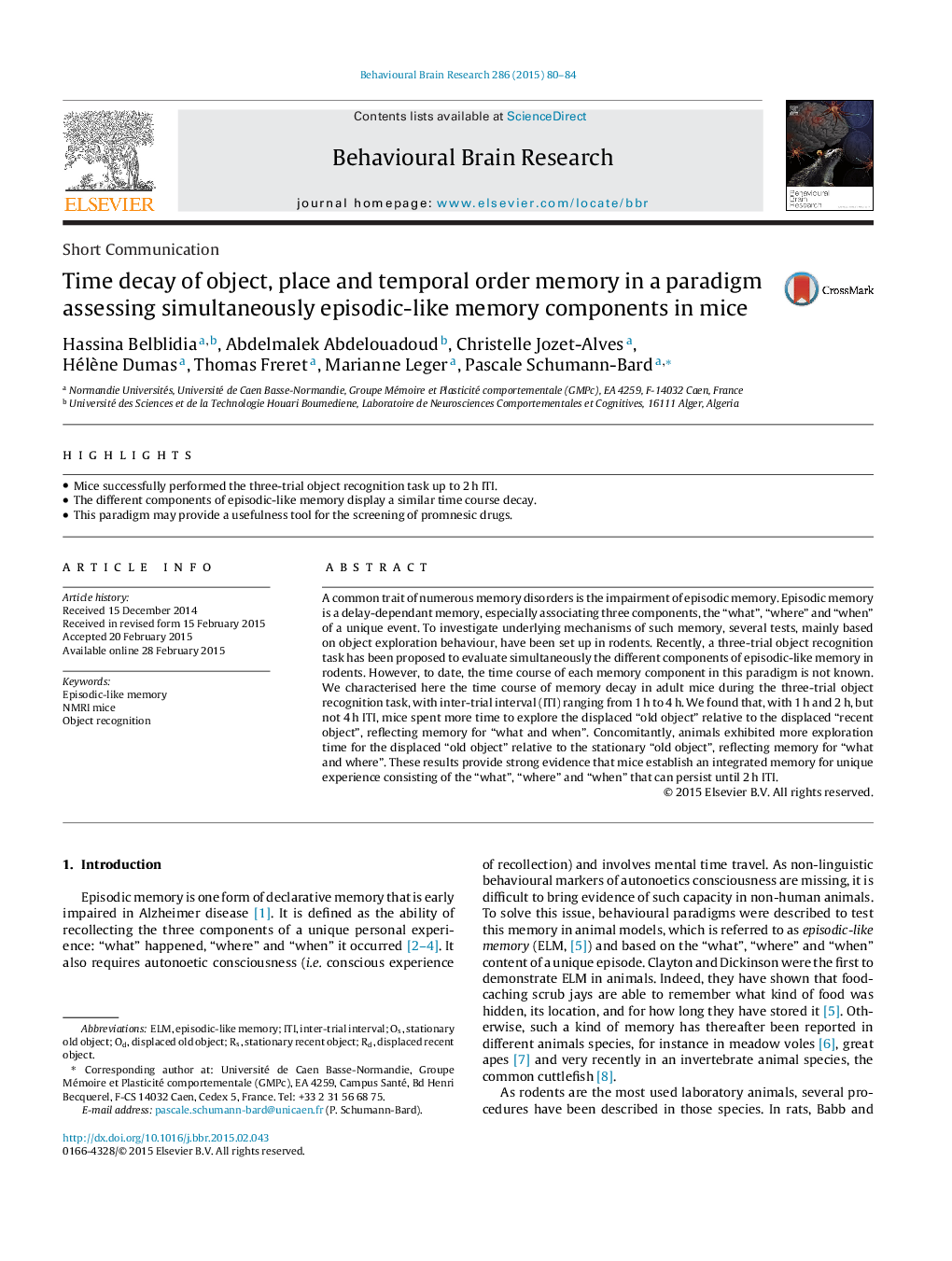| Article ID | Journal | Published Year | Pages | File Type |
|---|---|---|---|---|
| 6257091 | Behavioural Brain Research | 2015 | 5 Pages |
â¢Mice successfully performed the three-trial object recognition task up to 2 h ITI.â¢The different components of episodic-like memory display a similar time course decay.â¢This paradigm may provide a usefulness tool for the screening of promnesic drugs.
A common trait of numerous memory disorders is the impairment of episodic memory. Episodic memory is a delay-dependant memory, especially associating three components, the “what”, “where” and “when” of a unique event. To investigate underlying mechanisms of such memory, several tests, mainly based on object exploration behaviour, have been set up in rodents. Recently, a three-trial object recognition task has been proposed to evaluate simultaneously the different components of episodic-like memory in rodents. However, to date, the time course of each memory component in this paradigm is not known. We characterised here the time course of memory decay in adult mice during the three-trial object recognition task, with inter-trial interval (ITI) ranging from 1Â h to 4Â h. We found that, with 1Â h and 2Â h, but not 4Â h ITI, mice spent more time to explore the displaced “old object” relative to the displaced “recent object”, reflecting memory for “what and when”. Concomitantly, animals exhibited more exploration time for the displaced “old object” relative to the stationary “old object”, reflecting memory for “what and where”. These results provide strong evidence that mice establish an integrated memory for unique experience consisting of the “what”, “where” and “when” that can persist until 2Â h ITI.
